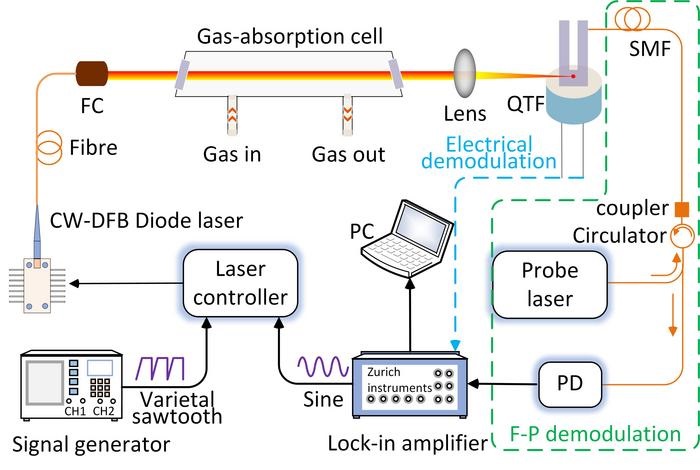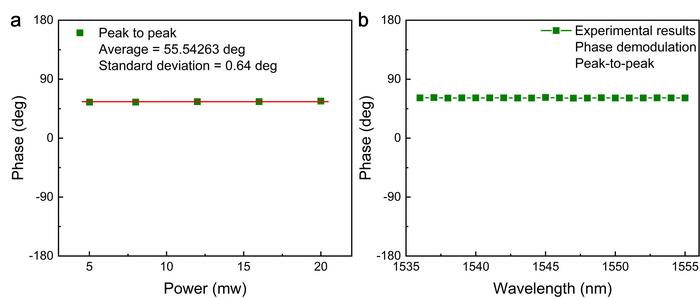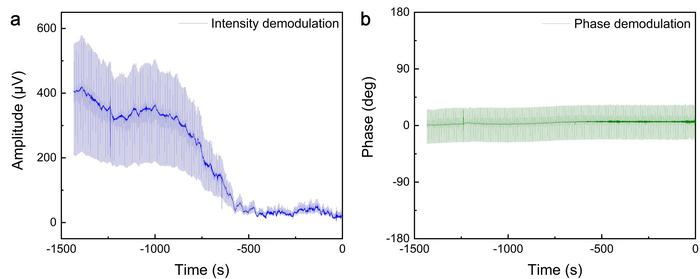
LITE Spectroscopy Resists Light Sources with Phase Demodulation
HARBIN, China, Sept. 12, 2023 — A team at Harbin Institute of Technology led by professor Yufei Ma introduced an approach to phase demodulation of heterodyne light-induced thermoelastic spectroscopy (H-LITES) that uses a Fabry-Pérot interferometer (FPI). Compared with traditional intensity demodulation systems, the new phase demodulation method is structurally simple and is resistant to interference from light sources and the surrounding environment when the LITES technique is used.

Diagram of the experimental setup. Pictured: continuous-wave distributed feedback (CW-DFB), fiber collimator (FC), photodetector (PD), quartz tuning fork (QTF), and single-mode fiber (SMF). Courtesy of Z. Lang et al.
LITES provides extremely high-sensitivity and noncontact measurement, making it a useful sensing technique for several different fields. However, the detection performance in traditional LITES is restricted by thermal noise, especially when a high-power laser is used. Laser irradiation in electrical signals magnifies exponentially as the laser power increases, restricting the signal-to-noise ratio (SNR) and minimum detection limit of a LITES sensor.
The researchers surmised that a potential solution to avoiding the effects of thermal noise would be to demodulate the vibration of the quartz tuning fork (QTF), which is used in LITES to detect vibrations, in place of the electrical signal.
The team used Fabry-Pérot demodulation instead of electrical demodulation with the QTF. FPIs are known to be safe, remote, sensitive, anti-electromagnetic interference measurement devices for micro-vibration.
Typically, the intensity demodulation method is used for Fabry-Pérot micro-vibration sensors, and, due to ambient interference and disturbance of the laser wavelength, the signal can become unstable.

The diagram shows the power and wavelength response of the H-LITES sensor based on FPI using the phase demodulation method. (a) Using the phase demodulation method, the peak-to-peak values of H-LITES signal were generally consistent, with an average of 55.54° and a standard deviation of 0.64°. The phase demodulation method is immune to disturbances from the laser source and can produce excellent detection performance even with a low-power probe laser. (b) The peak-to-peak values remained constant at wavelengths from 1536 to 1555 nm. The phase demodulation method is approximately wavelength-independent, with the same sensitivity at any wavelength; it does not require the wavelength to be fixed at the Q-point, and it is immune to laser wavelength disturbances. Q-point drifting due to ambient interference can be overcome using the phase demodulation method in the FPI. Courtesy of Z. Lang et al.

To prevent thermal noise in electrical signals caused by the QTF, the researchers used an FPI with an end-face of a single-mode optical fiber and a side of the tuning fork prong to measure the periodic vibration of the QTF. The length of the Fabry-Pérot cavity varied according to the effect of light-induced thermoelastic energy conversion on the vibration of the tuning fork, resulting in a shift in the FPI phase.
The vibration of the QTF, caused by gas absorption, was determined by demodulating the shift in the Fabry-Pérot cavity length using intensity and phase demodulation methods to invert the gas concentration. Because the vibration of the QTF was proportional to the gas concentration, the concentration could be inverted linearly by demodulating phase.
The researchers used H-LITES to verify sensor performance. In experiments, they optimized the parameters affecting the heterodyne signals, including the laser modulation frequency, modulation depth, laser wavelength scan rise time, amplitude, and detection bandwidth of the lock-in amplifier.
Using the intensity and phase demodulation methods, the SNRs of the 1f (i.e., the first harmonic of the frequency of the QTF) H-LITES signals based on FPI were 722.92 and 864.29, respectively. The results indicated that the phase demodulation method provided better detection performance than intensity demodulation.

The diagram shows the long-term stability of the H-LITES sensor based on FPI. (a) Using the intensity demodulation method, the peak-to-peak values of the H-LITES signals gradually decreased over time. The stability was poor. (b) The peak-to-peak values of the H-LITES signals obtained using the phase demodulation method were consistent, demonstrating that FPI-based H-LITES with the phase demodulation method had excellent system stability. Courtesy of Z. Lang et al.
The researchers used the intensity and phase demodulation methods to determine the concentration, power, and wavelength responses and the long-term stability of the 1f H-LITES sensor based on the FPI. They found that the phase demodulation method provided better concentration response linearity and better long-term stability than the intensity demodulation method.
The researchers verified that the phase of the FPI was related to the micro-vibration. The peak-to-peak value obtained using the phase demodulation method was found to be independent of the probe laser power and wavelength, in contrast to the intensity demodulation method. Thus, stabilizing the quadrature working point (Q-point) was no longer necessary.
The FPI-based H-LITES with phase demodulation method demonstrated good system stability and was able to resolve the issue of Q-point drifting due to ambient interference. According to the researchers, the phase demodulation method is immune to interference from the laser source and wavelength and can produce excellent detection performance even with a low-power probe laser.
The research was published in Light: Advanced Manufacturing (www.doi.org/10.37188/lam.2023.023).
Published: September 2023